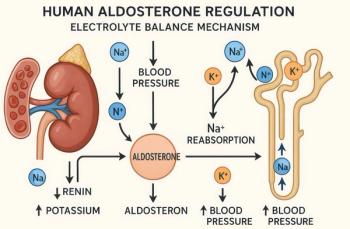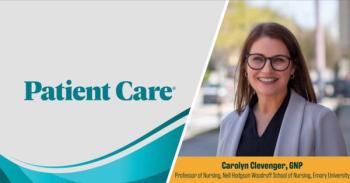
AI-Assisted Mammography Boosts Breast Cancer Detection by 29% in Large Study
Results from the MASAI clinical trial also showed that AI-assisted screening reduced screen-reading workload without increasing the rate of false-positives.
Groundbreaking findings from Lund University’s Mammography Screening with Artificial Intelligence (MASAI) clinical trial demonstrate a significant advancement in
The MASAI study evaluated the effectiveness of AI in enhancing
Results showed a 29% increase in
In a February 3, 2025, press release, Kristina Lång, MD, PhD, the study’s lead researcher and associate professor at Lund University, expressed satisfaction with the improved metrics, stating, “Since the first report last year, the number of cancers detected by AI-supported screening has gone from being 20% more to 29% more than those found by traditional screening.”2
The AI system also contributed to identifying approximately 51% more in situ cancers (68 cases vs 45 in the control group), with about half of the increased detection being high-grade in situ cancer, Lång and colleagues observed. Notably, while cancer detection rates increased, AI screening did not significantly increase
The workload for radiologists was also reduced, with AI-supported screening leading to a 44.2% decrease in the number of screen readings required compared with the control group, which would allow radiologists to focus on more complex cases, potentially improving patient care.1
“The large reduction in screen-reading workload made possible by the AI-supported screen-reading procedure would free up time for breast radiologists to spend on more complex patient-centered tasks,” investigators wrote. “Since breast cancer treatment and related costs escalate with increasing stage, downstaging through earlier detection by use of AI would suggest lower morbidity and treatment costs. To address the cost- effectiveness of AI-supported screening, health economic analyses based on the MASAI trial are under way.”1
Initial findings from the MASAI study were published August 2023 and the final report will be written next year, according to the press release.2,3 The next stage of the trial will focus on interval cancer detected between screenings, which will be assessed after a 2-year follow-up.1
The researchers acknowledged some limitations, including the study’s focus on a Swedish screening population, which may limit generalizability to other health care systems. Additionally, the long-term impact on patient outcomes remains to be determined.1
“Altogether, use of AI has the potential to increase the early detection of clinically relevant breast cancer without unduly increasing the harm of false positives and overdiagnosis of low-grade in situ cancer,” Lång et al concluded. “This study offers important insights into the clinical impact of the use of AI in mammography screening, but further follow-up addressing the interval cancer rate and cost-effectiveness is needed.”1
References:
- Lång K, Hernström V, Josefsson V, et al. Screening performance and characteristics of breast cancer detected in the Mammography Screening with Artificial Intelligence trial (MASAI): A randomised, controlled, parallel-group, non-inferiority, single-blinded, screening accuracy study. Published online February 3, 2025. doi:10.1016/S2589-7500(24)00267-X
- AI-supported breast cancer screening – new results suggest even higher accuracy. News release. Lund University. February 4, 2025. Accessed February 4, 2025.
https://www.lunduniversity.lu.se/article/ai-supported-breast-cancer-screening-new-results-suggest-even-higher-accuracy - Lång K, Josefsson V, Larsson AM, et al. Artificial intelligence-supported screen reading versus standard double reading in the Mammography Screening with Artificial Intelligence trial (MASAI): A clinical safety analysis of a randomised, controlled, non-inferiority, single-blinded, screening accuracy study. Lancet Oncol. 2023;24:936-944. doi: 10.1016/S1470-2045(23)00298-X
Newsletter
Enhance your clinical practice with the Patient Care newsletter, offering the latest evidence-based guidelines, diagnostic insights, and treatment strategies for primary care physicians.

















































































































































































































































































